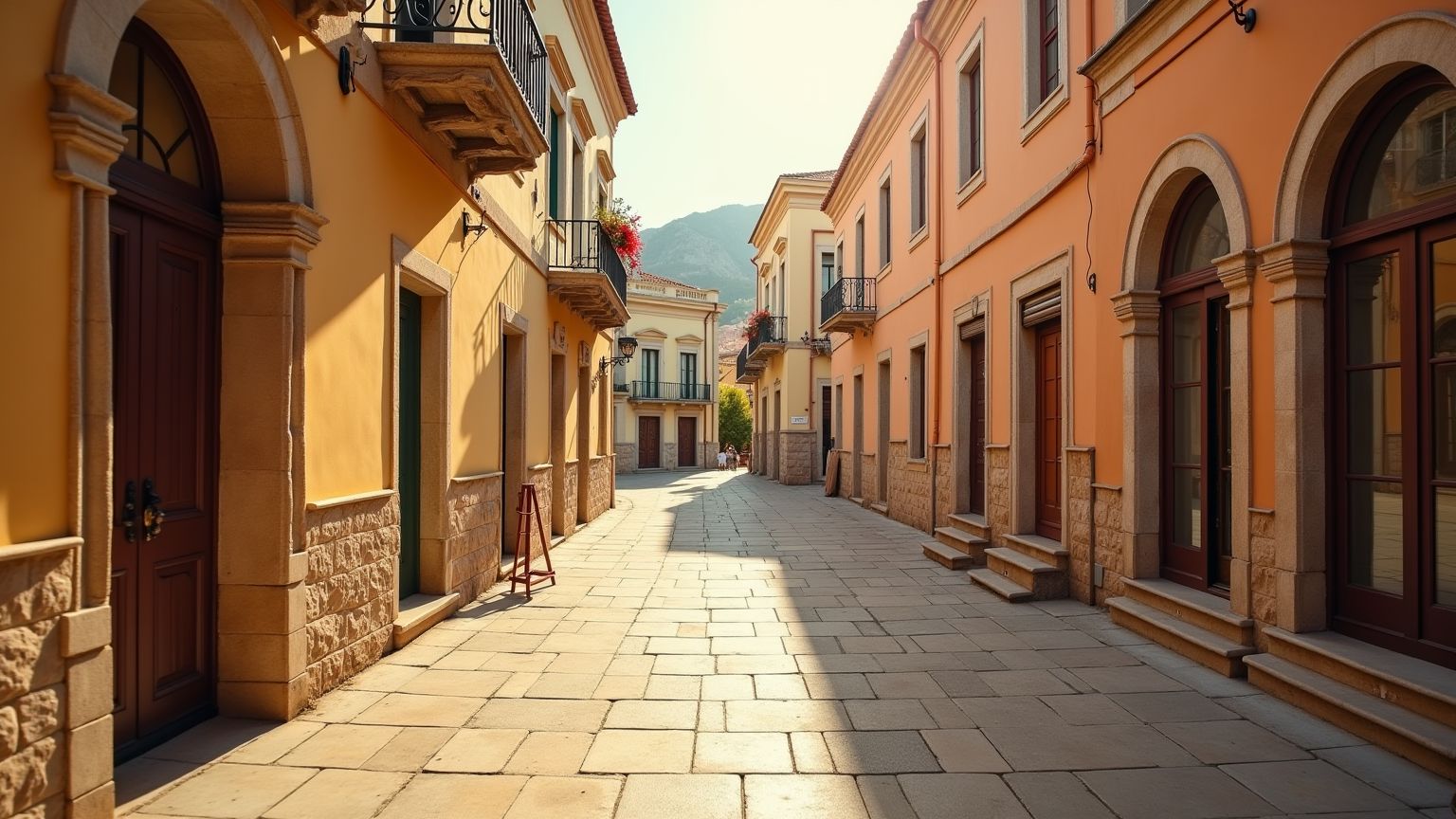Nafplio’s Venetian Architecture: Discover the Hidden Mediterranean Jewel That Once Ruled a Nation
The sun was setting as I leaned against the ancient stones of Palamidi Fortress, watching golden light spill across Nafplio's Venetian architecture below me. The terra-cotta rooftops seemed to catch fire against the deepening blue of the Argolic Gulf. After fifteen years of guiding visitors through these cobbled streets, I still catch my breath at this view.
While the masses flock to Athens and Santorini, Nafplio whispers its secrets to those willing to listen – offering that rare trifecta of historical depth, architectural wonder, and authentic Greek living without the tourist crush.
A Former Capital With Royal Heritage
Most folks do a double-take when I tell them this charming seaside town of barely 12,000 souls once served as Greece's first capital. Nafplio's Venetian architecture didn't just house locals – it sheltered a fledgling government.
From 1829 until 1834, while Greece was finding its footing after Ottoman occupation, Nafplio stood proud as the nation's beating heart before King Otto packed up and moved operations to Athens.
Meandering through the old town's maze-like alleys today – where bougainvillea cascades over weathered walls and cats nap in patches of sunshine – you can practically hear echoes of nation-building conversations. Nafplio's Venetian architecture wasn't merely decorative; it housed history in the making.
• Former parliament building stands proudly in Syntagma Square
• Neoclassical mansions once hosted diplomatic negotiations
• Every stone corner has witnessed pivotal moments in Greek independence
A Journey Through Time: Nafplio's Ancient Roots

The thing that knocks my visitors' socks off isn't just Nafplio's Venetian architecture and Ottoman touches – it's realizing humans have called this spot home since the Stone Age. Archaeological finds prove settlements existed around 3000 BCE, making your morning cappuccino spot one of Europe's oldest continuously inhabited places.
The town's prime real estate on the Peloponnese peninsula made it hotter property than beachfront in Mykonos. Byzantines, Franks, Venetians, and Ottomans all squabbled over it for centuries, each leaving their architectural fingerprints everywhere you look.
Nafplio's Venetian architecture stands as the most prominent layer in this historical lasagna – elegant archways and sturdy fortifications that have weathered centuries of Mediterranean storms and human conflict.
The Three Fortresses: Sentinels of the Sea
Nafplio's skyline is dominated by three fortress crowns, each with tales to tell about the town's colorful past.
The behemoth Palamidi Fortress looms 216 meters overhead – a masterpiece of Venetian defensive architecture. Locals will swear there are 999 steps to the top (I've counted 857 myself, but who's quibbling when your thighs are burning halfway up?). The panoramic reward makes every step worthwhile, with views stretching clear to Arcadia's misty mountains.
Akronafplia, the granddaddy of Nafplio's fortresses, hunkers on the peninsula forming the old town's southern edge. Its walls are a historical patchwork – Byzantine stonework here, Frankish additions there, and Venetian architecture seamlessly integrated throughout. My secret tip? Be there at sunrise when the first light paints these ancient stones in shades of amber and gold.
Then there's charismatic Bourtzi – that photogenic castle seemingly afloat in the harbor. Crafted in the 1470s, this sea-bound masterpiece of Nafplio's Venetian architecture once blocked enemy ships with massive chains stretched across the harbor entrance. Today it's Nafplio's maritime mascot, occasionally hosting summer concerts where music drifts across moonlit waters.
💡 Insider Tip: The boat ride to Bourtzi offers the money shot of Nafplio's Venetian architecture from sea level – worth every euro for photographers.
Gateway to Archaeological Treasures
Nafplio doesn't just showcase its own splendors – it's the perfect basecamp for exploring archaeological heavyweights nearby.
A quick 30-minute drive delivers you to mighty Mycenae, Agamemnon's legendary kingdom. The massive Lion Gate still guards the entrance as it has since 1250 BCE. Those cyclopean walls – built from stones so massive ancient Greeks thought only mythological giants could have moved them – stand in defiant testimony to Bronze Age engineering. After exploring ruins that Homer himself wrote about, you return to the comfort of Nafplio's Venetian architecture and modern amenities.
Then there's Epidaurus, with its jaw-dropping ancient theater. Just 30 kilometers from your Nafplio breakfast table sits this 4th century BCE acoustic miracle. I've watched countless skeptical visitors become wide-eyed believers when I demonstrate how a whispered word at center stage carries perfectly to the theater's highest row, 14,000 seats away.
What makes basing in Nafplio so special? You're experiencing Greek history as a continuum rather than isolated sites. From ancient ruins to Byzantine churches to Nafplio's Venetian architecture to modern Greek life – the whole timeline unfolds before you.
A Culinary Journey Through Local Flavors
Nafplio's food scene strikes that perfect balance – traditional enough to be authentic, sophisticated enough to impress culinary snobs. Unlike touristy islands where restaurants cater mainly to foreigners, Nafplio's eateries must please discriminating locals first.
The surrounding Argolida region bursts with citrus orchards and silvery olive groves. Regional specialties include:
• Gogges: hand-rolled pasta with rich sauce
• Artichokes with pork in egg-lemon sauce
• Just-caught seafood from the gulf
• Orange-scented spoon sweets that capture sunshine in a jar
I steer my guests away from the postcard-perfect main squares (lovely for coffee, overpriced for dinner) toward family establishments where yiayias (grandmothers) still rule the kitchen. Tavernas like "To Byzantino" serve dishes unchanged for generations, often in courtyards shaded by grapevines and Nafplio's Venetian architecture.
The Wednesday and Saturday markets are sensory feasts where farmers proudly display produce grown in the same fertile fields that fed ancient Mycenaeans. The honey vendor will insist you sample different varieties – thyme, pine, orange blossom – each telling a different story of the surrounding landscape.
Beyond the Guidebooks: Hidden Corners and Local Experiences
After years of showing folks around, I've learned the most cherished memories rarely come from the obvious attractions.
While tourists climb to Palamidi, savvy visitors discover the Arvanitia promenade – a scenic coastal path circling beneath Akronafplia's walls. This leisurely 20-minute stroll delivers breathtaking sea views and glimpses of Nafplio's Venetian architecture from angles missed by most visitors, eventually leading to Arvanitia Beach where locals gather for evening swims.
Nafplio houses several small museums punching above their weight in cultural significance. The National Gallery's Nafplio Branch displays art chronicling Greece's revolutionary period, while the quirky Komboloi Museum celebrates worry beads – those clicking talismans that provide the soundtrack to Greek café culture.
If your visit coincides with Orthodox Easter, you're in for the spectacle of a lifetime. Candle-lit processions wind through streets lined with Nafplio's Venetian architecture, culminating in midnight celebrations where "Christos Anesti" (Christ is Risen) rings out amid fireworks and pealing church bells.
Practical Tips for Your Visit
Unlike many Greek destinations that become ghost towns in winter, Nafplio stays lively year-round. As the administrative heart of Argolida, local life continues regardless of tourism seasons.
🗓️ Prime visiting times:
• April-June: Wildflowers, warm days, fewer crowds
• September-October: Swimming-perfect sea temperatures, harvest season
• Winter: Mild temperatures, intimate experience of local traditions
Accommodation ranges from swanky to sweetly simple. Nafplia Palace offers luxury with knockout views, while family-run guesthouses like Pension Marianna provide authentic Greek hospitality at gentler prices. Many boutique hotels occupy renovated buildings showcasing Nafplio's Venetian architecture from the inside out.
Transportation connections couldn't be easier, with regular buses from Athens (about 2 hours) and excellent roads for drivers. Having wheels gives you freedom to explore surrounding archaeological treasures and secret beaches at your own pace.
A Living History Lesson
What makes Nafplio magical isn't just its beauty or Nafplio's Venetian architecture – it's how the entire timeline of Greek civilization converges in one walkable town. From Neolithic beginnings through classical glory, Byzantine spirituality, Venetian grandeur, Ottoman occupation, revolution, and finally modern statehood – every chapter of Greek history left its mark here.
As someone who's spent countless days introducing visitors to these streets, I've watched Nafplio work its quiet spell. Travelers arrive planning a quick stopover and find themselves extending their stay, seduced by layers of charm they didn't expect.
Unlike archaeological parks where history feels cordoned off, Nafplio's heritage lives and breathes in everyday moments. That café where you're sipping freddo espresso? Revolutionary heroes once plotted independence there. The church with breathtaking icons? Still the Sunday gathering place for local families. The fortress providing your sunset Instagram backdrop? It once sheltered real people from real invaders.
Nafplio's Venetian architecture isn't preserved in amber – it's incorporated into vibrant modern life. That seamless connection between past and present makes Nafplio not just picturesque but profoundly authentic.
When you visit Nafplio, you're experiencing concentrated Greece – its resilience, beauty, and cultural continuity from ancient times to today's espresso-sipping, worry-bead-clicking, ouzo-toasting present.
Beneath the spectacular bones of Nafplio's Venetian architecture beats the heart of eternal Greece – a place where history never ended but simply continued, writing new chapters every day.








